Why Is My Email Signature Not Showing Up in Outlook?
Outlook lets you add a custom message or your contact info automatically to the end of every email. Sometimes, though, the signature might not show up. In this guide, we'll go over different ways to fix the "Outlook signature not showing" problem.
Table of Contents
- Common Reasons Why Signatures May Not Appear
- Step-by-Step Solutions to Fix Signature Display Issues
- How to Create an Email Signature for Outlook
- FAQ
Common reasons why signatures may not appear
Before we get to the fixes, let's find out what are the reasons why the signature is not showing.
Incorrect signature settings
One of the most common reasons is that the signature settings are not configured correctly. Make sure your default signature is set for both new emails and replies/forwards.
Email format issues
Outlook may not display signatures correctly if there are email format issues, such as switching between plain text, HTML, and rich text.
Registry errors
In some cases, registry mistakes or corruption can cause your Outlook signature to disappear. This can happen especially in environments where IT policies or software updates interfere with the default settings.
Problems with Office 365 updates
Sometimes, updates to Office 365 can reset or change your signature settings. Make sure your software is up to date and check for any recent changes.
Roaming signature issues
If you use Outlook on multiple devices, roaming signatures may not synchronize properly, causing them to disappear on certain devices.
Now that you know the answer to the "Why is my signature not showing up in Outlook" question, let's move on to the practical part.

Create your professional email signature with MySignature
Building a professional email signature that's customized to suit your brand has never been easier:
Create your first email signature now!Step-by-Step solutions to fix signature display issues
Here, we explore the solutions.
Solution 1: Check your settings
The first step that you should take to troubleshoot the problem of why your signature is not showing up in Outlook is to check your settings. After you add a signature in Outlook you still need to make sure that the signature is on.
Here are the steps to take if you are using Outlook desktop:
- Open Outlook and go to the File menu.
- Select Options and then Mail.
- Click on Signatures and ensure your desired signature is set as the default for new emails and replies/forwards.
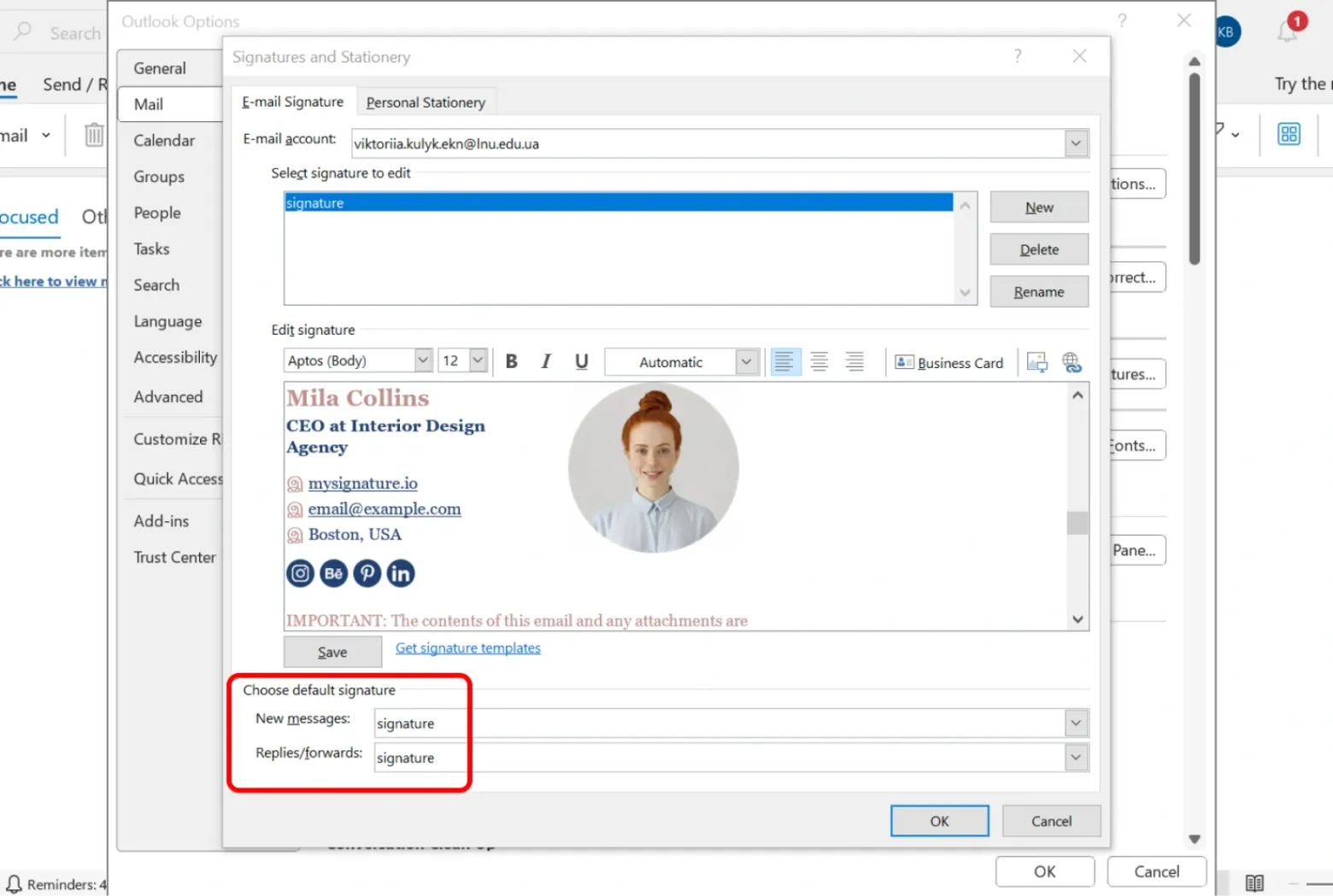
If you are using Outlook.com, follow these steps:
- Open your browser and go to outlook.com.
- Sign in to your account.
- Click the gear icon in the upper-right corner of the screen to open the Settings menu.
- In the Settings pane, scroll to the bottom and click "View all Outlook settings."
- In the new window that opens, click "Compose and reply" under the Mail category.
- In this section, you will see your email signature.
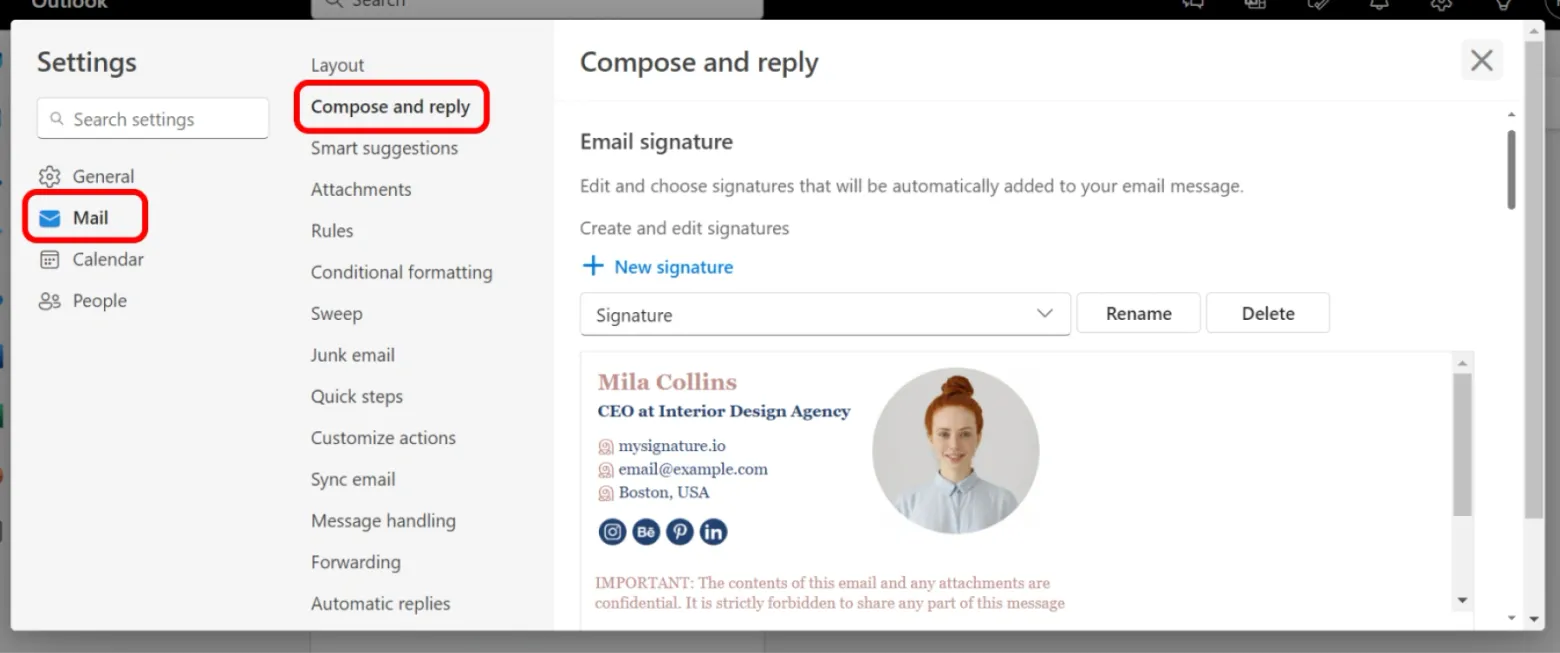
If there you see the signature you want to use, then your Outlook signature is set up correctly.
Solution 2: Verify email format
Compose a new email and make sure the format is set to HTML. If your emails are sent as plain text, your signature won't display correctly.

Solution 3: Repair Office 365 Outlook
- Go to Control Panel > Programs > Programs and Features.
- Select Microsoft Office and click on Change.
- Choose Quick Repair or Online Repair to fix any issues.
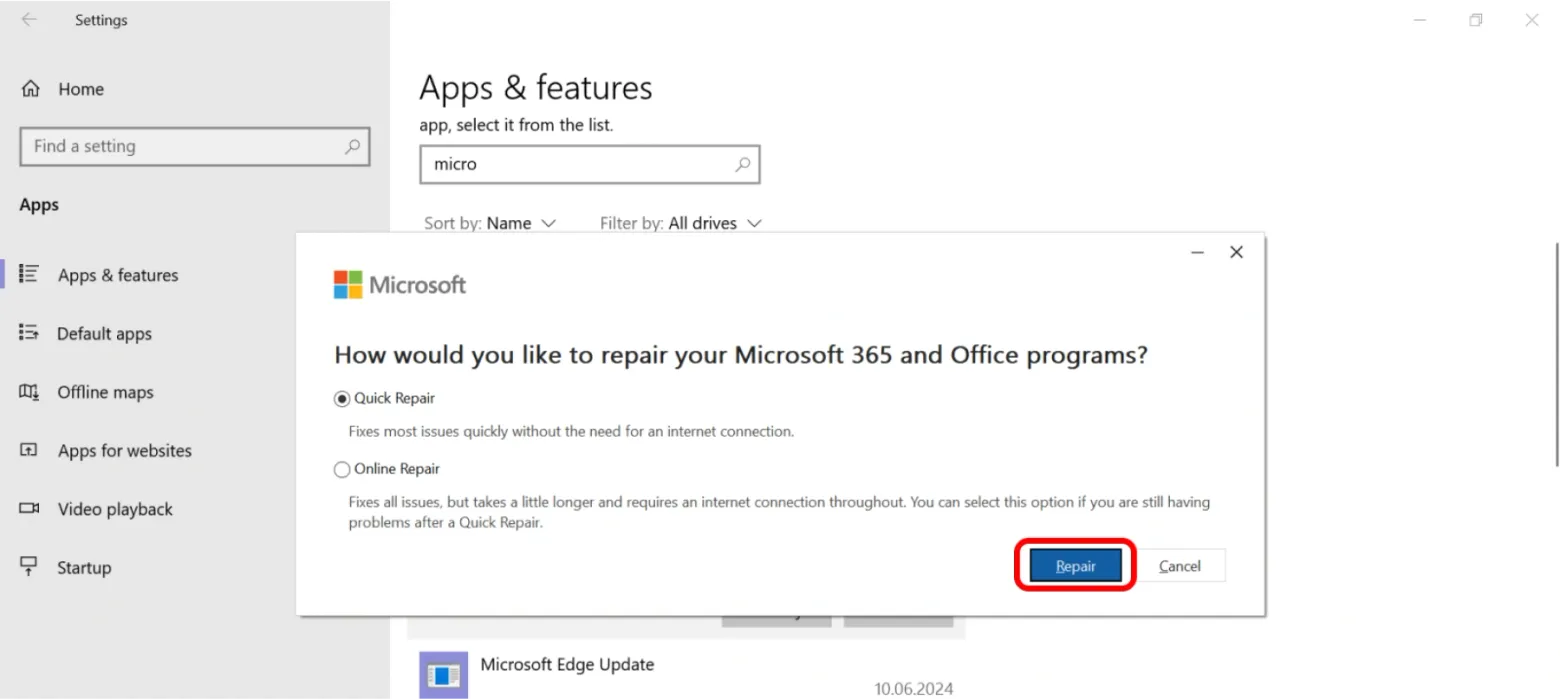
Hopefully, this will help resolve the issue. If not, more on to the next solution.
Solution 4: Update Outlook
Ensure your Outlook is updated to the latest version, as updates often include bug fixes that might resolve the issue of your Outlook email signature not showing.
Here is how to update Outlook:
- Open Outlook and go to File > Office Account > Update Options
- Select Update Now to make sure that you have the latest version.
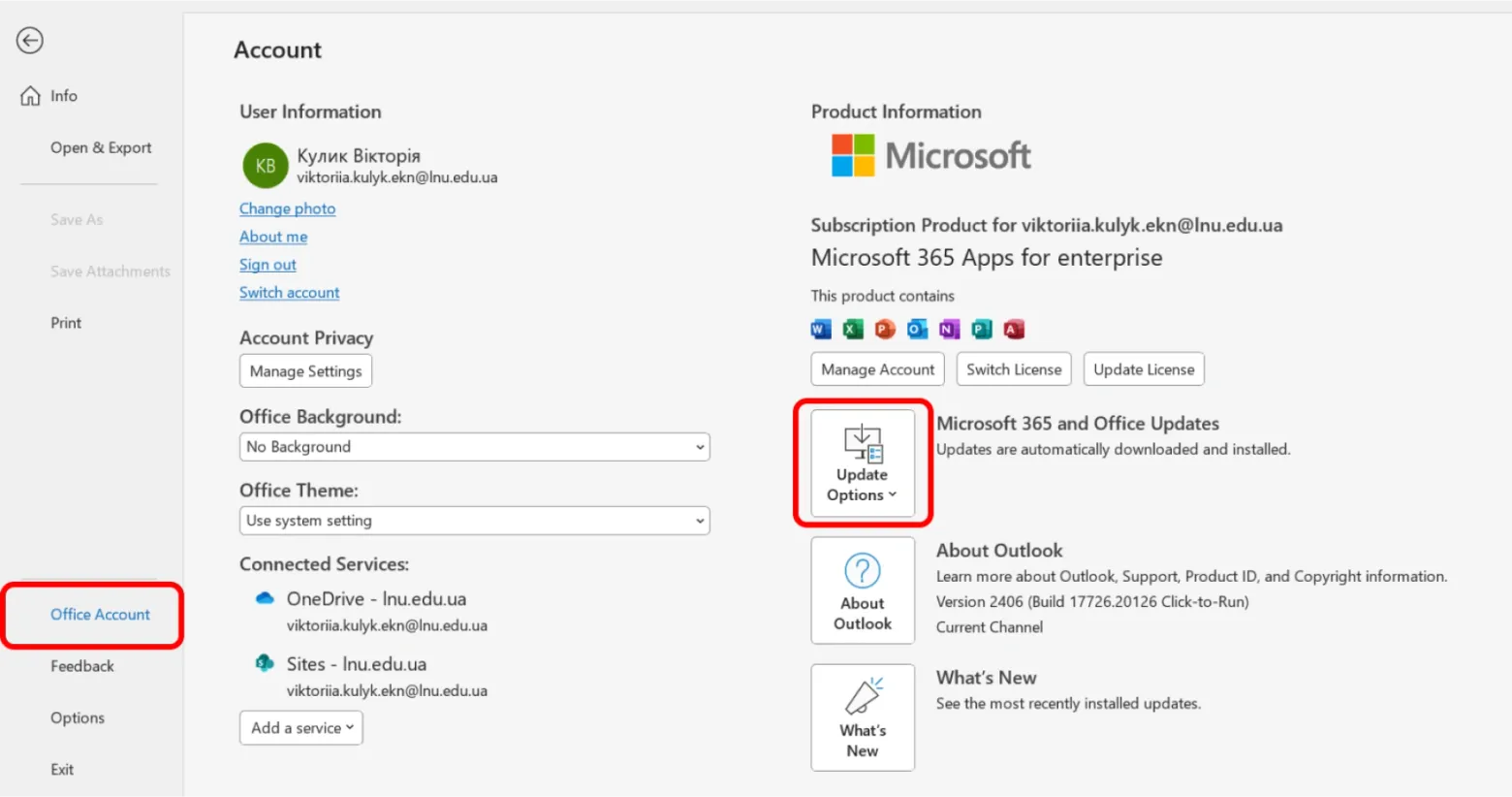
Note: If there is a problem with the network connection, the signature may not be included in the email message.
Solution 5: Reconfigure roaming signatures
For your signatures to travel across devices, you must use the same Outlook account on each device. However, as of now, this only works for your different PCs. If you create a new signature on your desktop Outlook, it won't show up on your mobile Outlook automatically. You'll need to set up your signature separately on each device.
Video on how to add email signature to Outlook
Let's discover together how to add email signature to Outlook Watch our video and learn how to do it flawlessly.
How to create an email signature for outlook
Now that we've covered the most common reasons why your signature might not appear in Outlook and provided solutions to fix these problems, it's time to take a proactive approach. In fact, Outlook's basic signature feature gets the job done. But to really stand out, consider using HTML for your signature. It opens the door to creative designs, cool features, and a professional look that text alone can't provide.
So, if you decided to create a new Outlook signature, follow the steps below:
Step 1: Design your Signature with MySignature
MySignature email signature editor makes creating a professional signature quick and easy. You can take advantage of professionally-designed signature templates and customize every detail to your taste.
Start by choosing a ready-made template. However, you can also start from scratch if you don't like templates. Add general info you want to include, such as a job title, company name, photo, brand logo, social media icons, contact details, and other additional elements you might want to have.
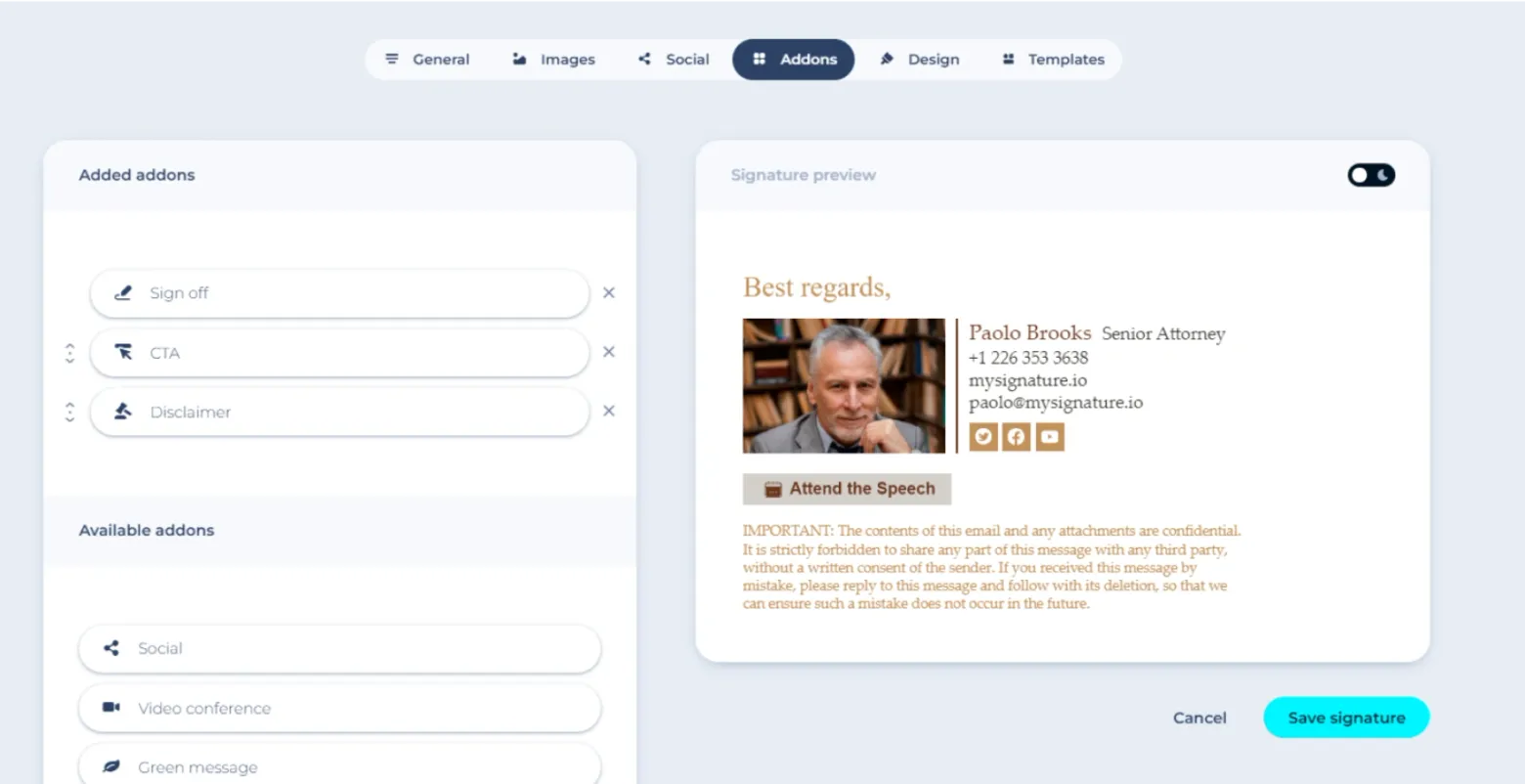
With MySignature, you can make adjustments to the overall design by choosing the font, font size, colors, layout, and much more. Then, you can save your Outlook signature and access it in your Dashboard.
Step 2: Copy your signature
Now, you need to insert your new Office 365 email signature into your Outlook account. For this, copy it from your MySignature Dashboard. Locate the signature in your Dashboard and click Install to start the process. Follow the on-screen instructions.
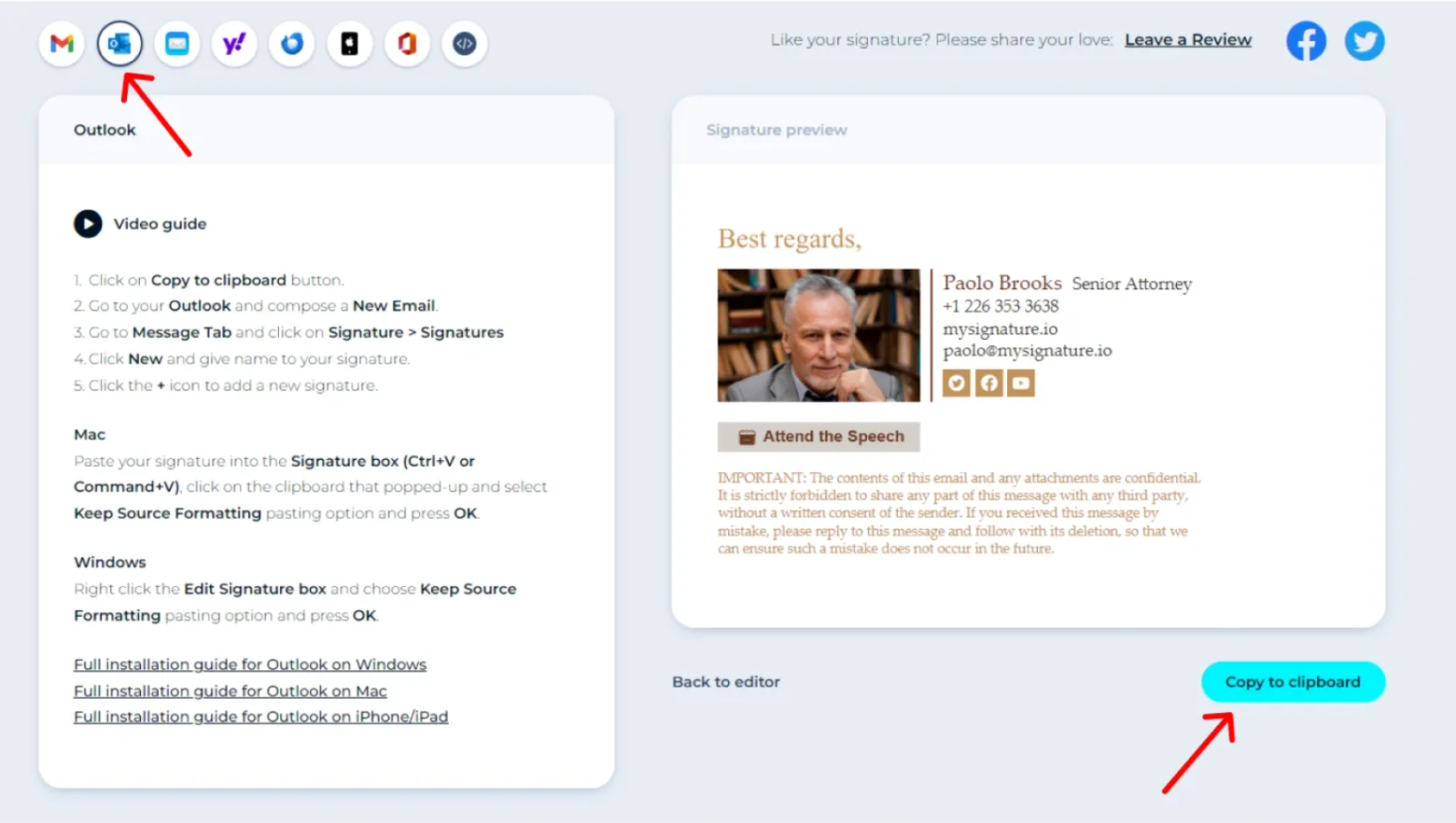
Step 3: Go to your Outlook signature section
After grabbing your email signature from the MySignature Dashboard, you can go to your email account to add a signature in Outlook.
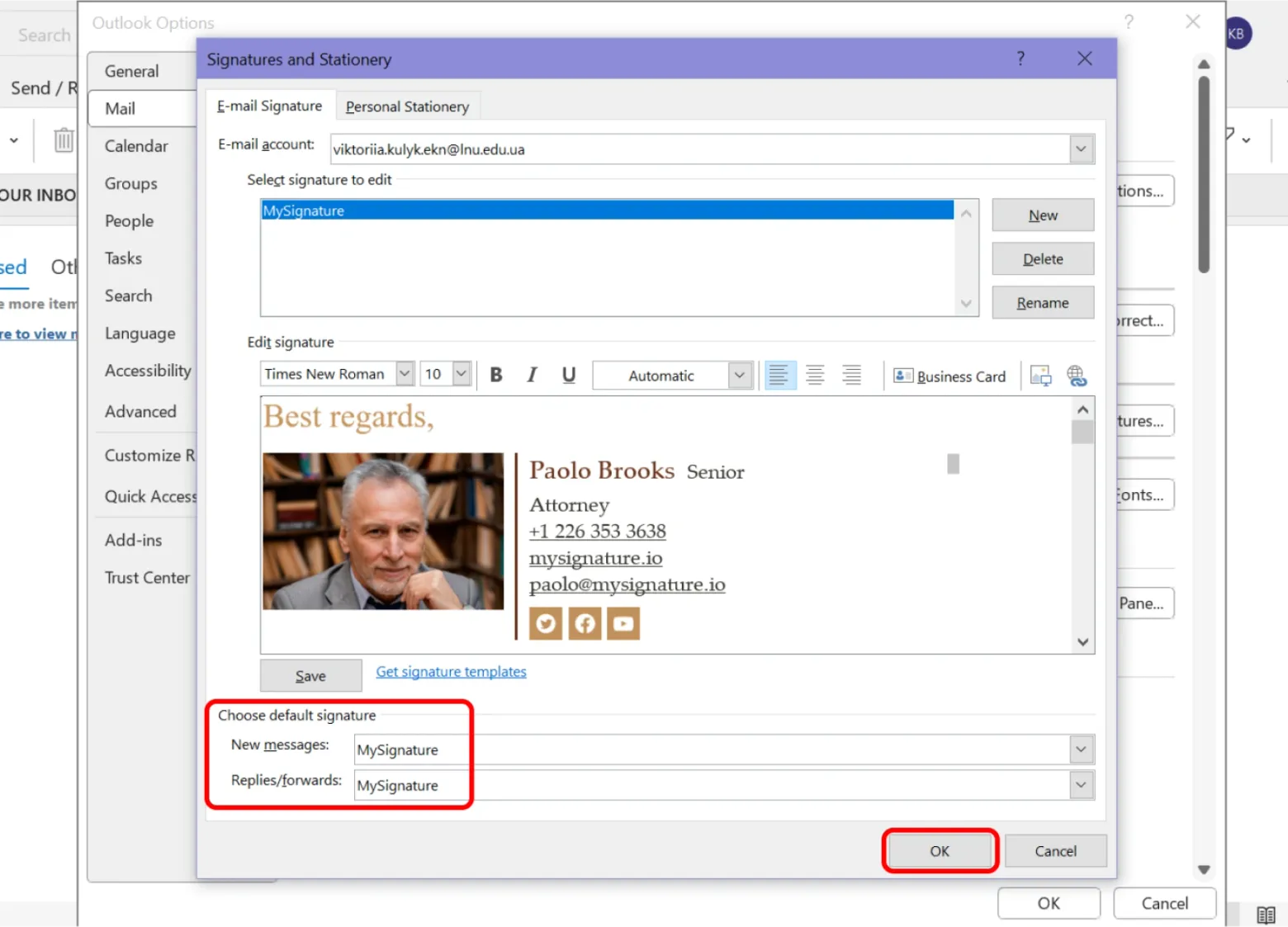
By creating a professional email signature from the start, you can avoid many problems such as formatting issues, missing signatures, extra line in signature, manual errors, synchronization problems, and an unprofessional appearance. The best part? Your signature will look good on both desktop and mobile devices, no matter what email client your recipients are using.
Try Mysignature
MySignature is an all-in-one tool for creating branded and well-designed email signatures.
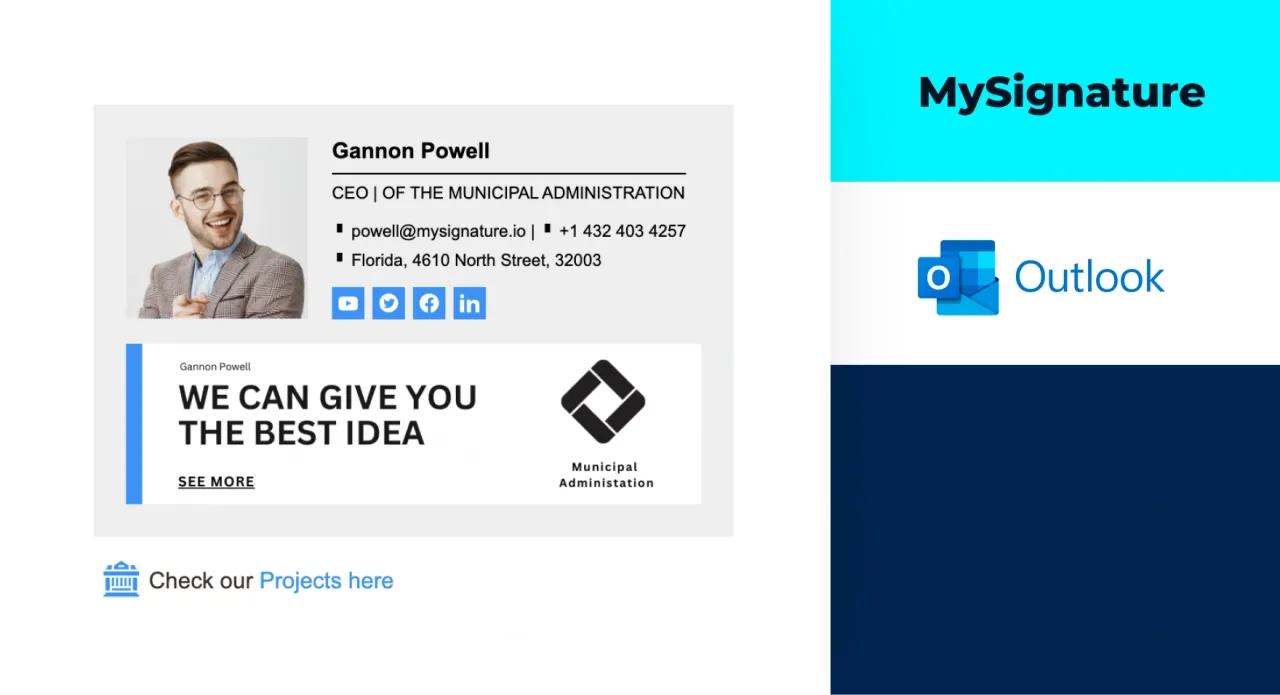
Are you ready to create your new Outlook signature? Click below to get started.
Explore more email signature guides for Outlook
For more detailed guides and troubleshooting tips, explore our additional resources:
F.A.Q
Outlook signature for desktop not showing?
Outlook signature now working? First of all, make sure that your signature settings are correctly configured for new emails and replies/forwards. Then, check email format settings and update Outlook to the latest version.
Outlook signature not showing in replies?
Verify that the default signature is set for replies/forwards in the Signature settings.
Outlook signature not showing on mobile?
Mobile devices may have different signature settings than desktop devices. Ensure your signature is set up on the mobile Outlook app.
Outlook signature not showing up in new emails?
Make sure the default email signature is selected for new emails in the Signature settings menu.
What should I do if my Outlook signature still doesn't show after checking settings?
Try recreating your signature from scratch, repairing Office Microsoft 365, or checking for registry errors. If the problem persists, contact Microsoft support for further assistance.